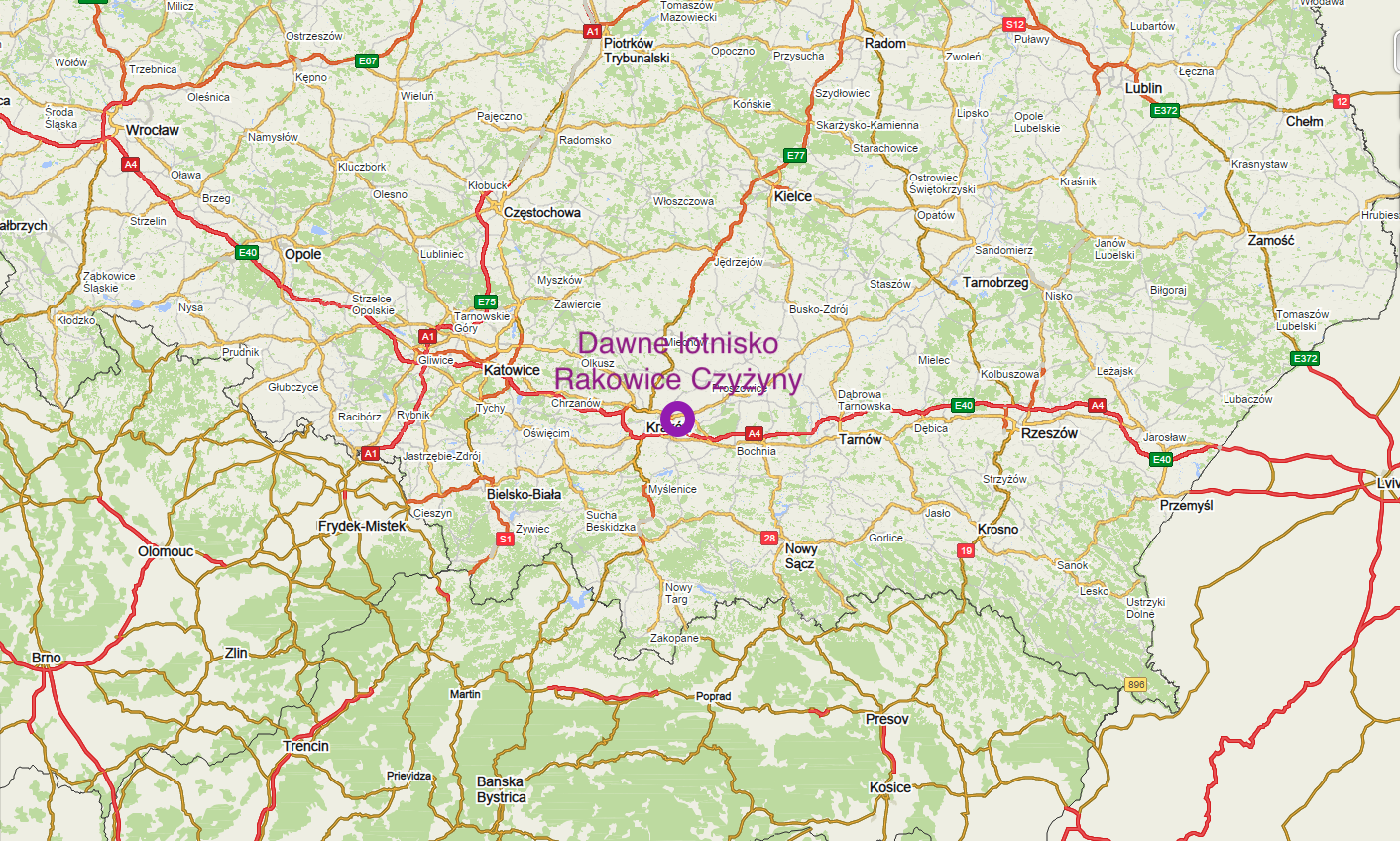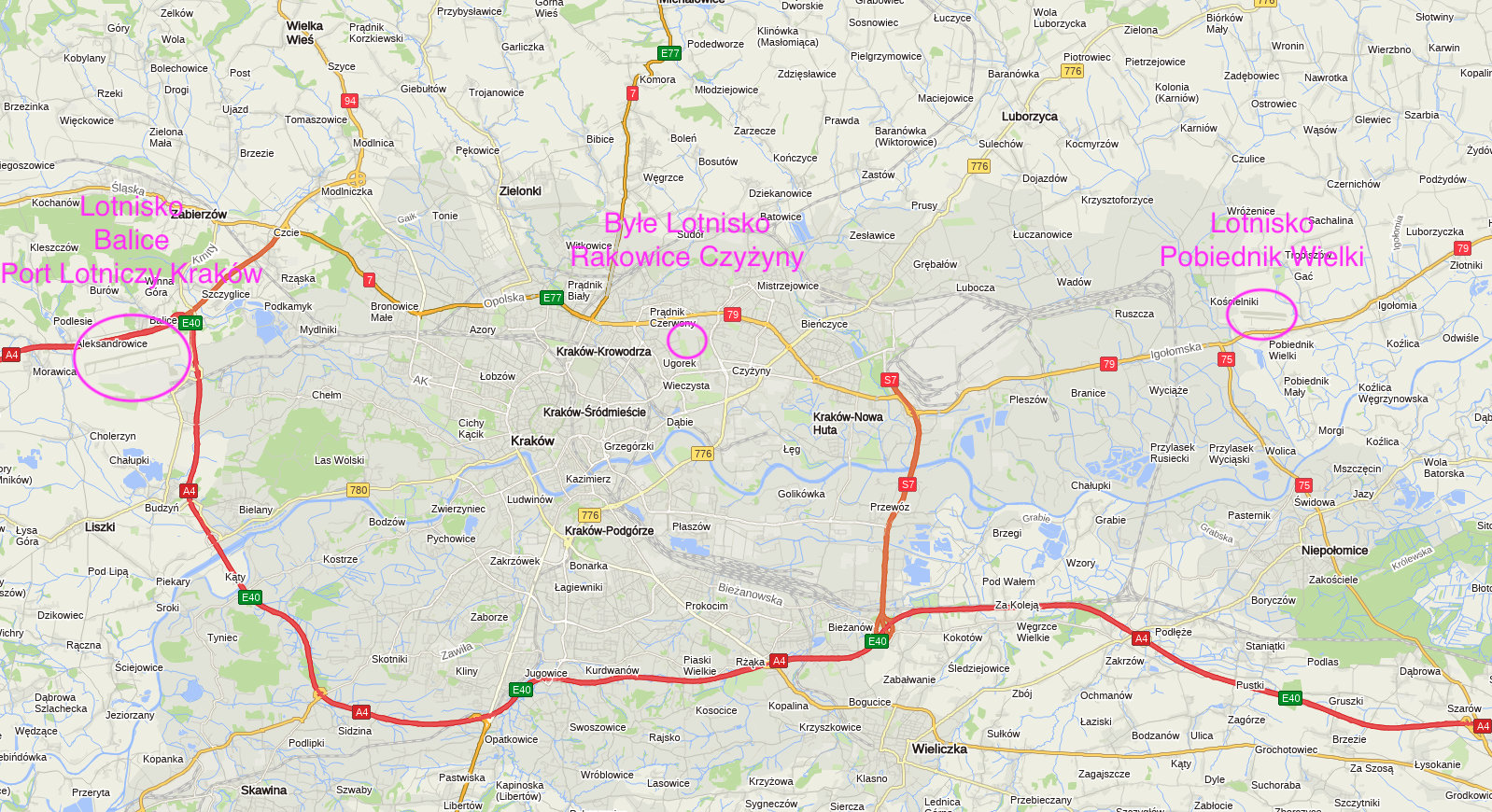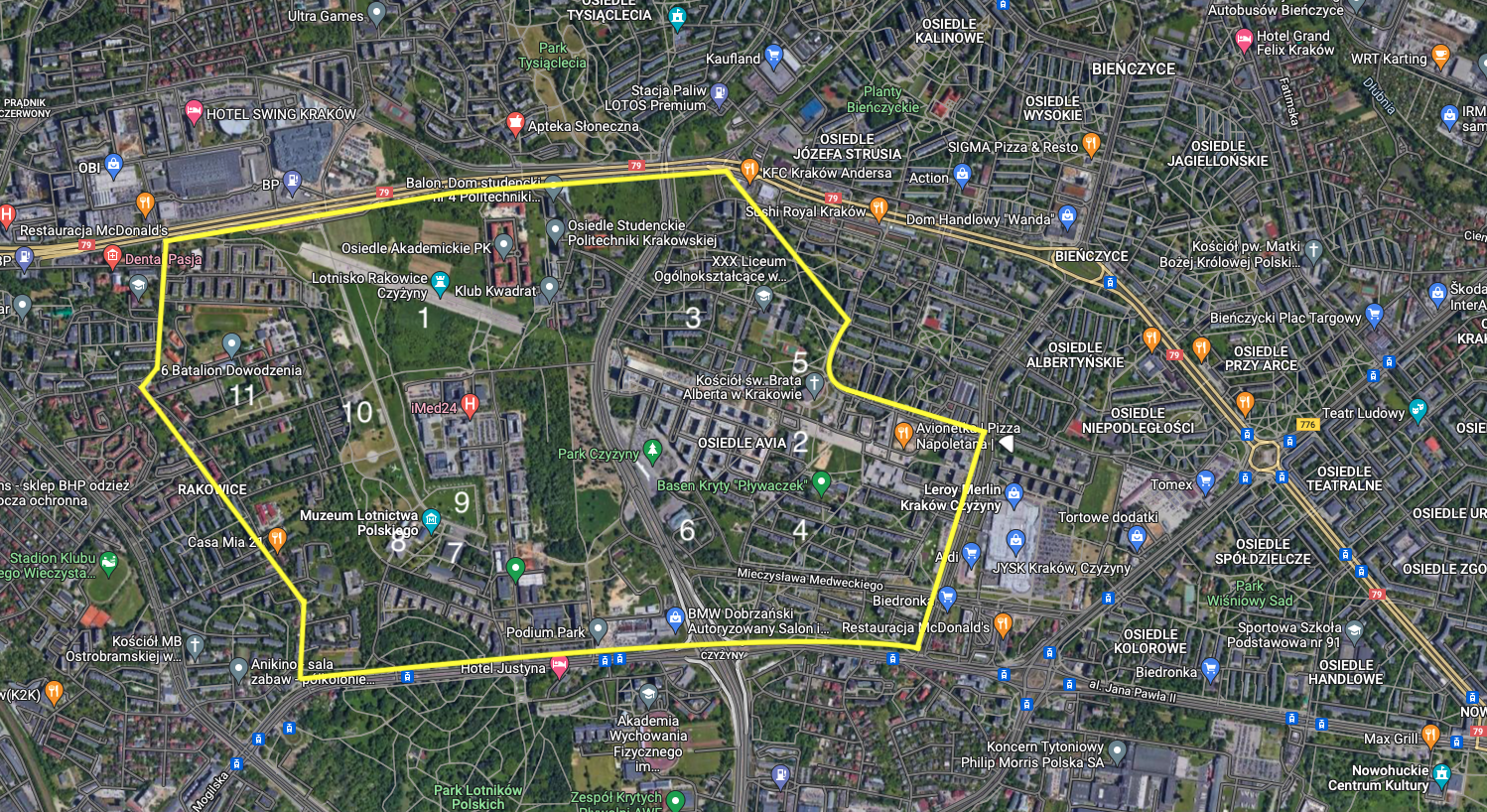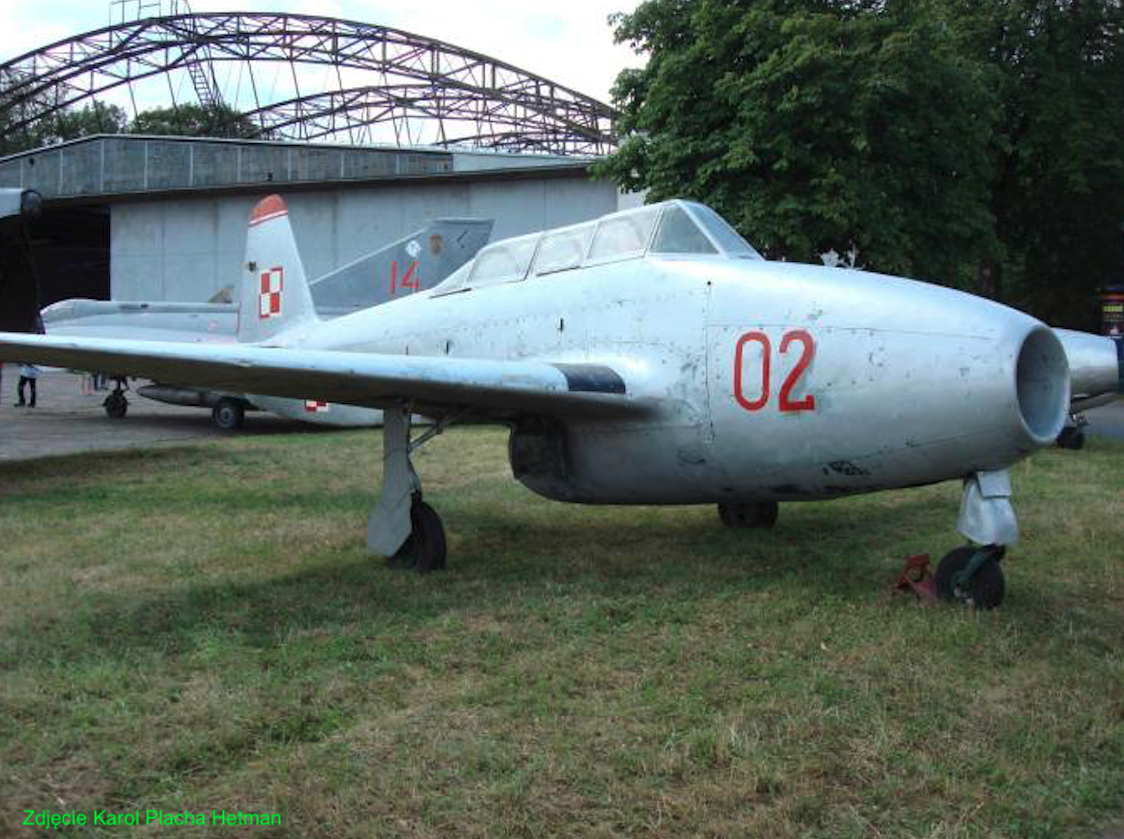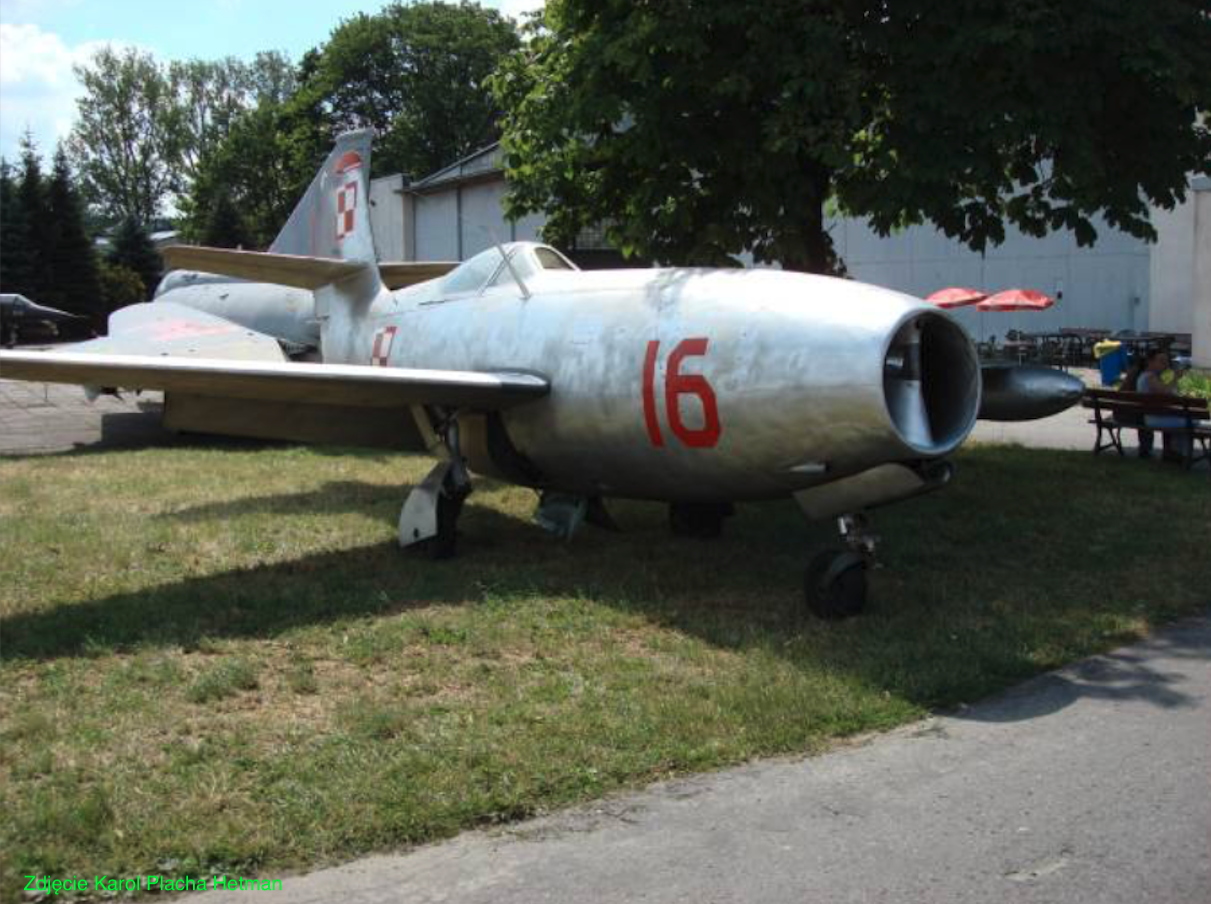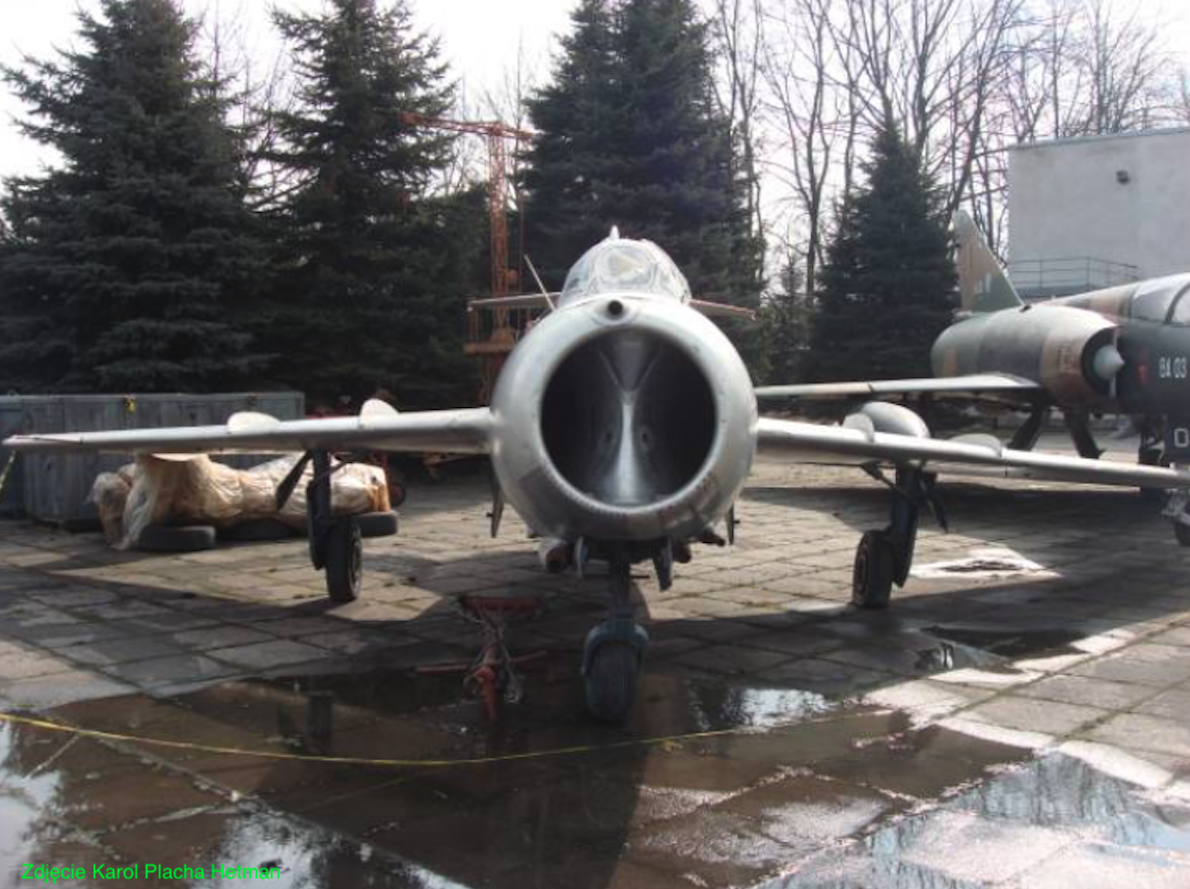Kraków 2009-04-25
Byłe lotnisko Rakowice Czyżyny w Krakowie.
Współrzędne geograficzne: 50.078N 19.992E (50,04N 19,59E). Elewacja 218 m n.p.m.
Opis zdjęcia: 1 – Czynny fragment RWY. 2 – Nieczynny fragment RWY. 3 – Osiedle Dywizjonu 303. 4 – Osiedle 2. Pułku Lotniczego. 5 – Kościół pod wezwaniem Brata Alberta. 6 – Były hangar PLL LOT, była zajezdnia MPK, obecnie obiekt muzealny. 7 – Były hangar 2. Pułku Lotniczego, obecnie muzeum. 8 – Gmach muzeum. 9 – Ekspozycja plenerowa. 10 – Byłe hangary. 11 – Jednostka Wojskowa.
Położenie lotniska Rakowice – Czyżyny.
Lotnisko położone jest w granicach administracyjnych Krakowa. W związku z budową „nowego socjalistycznego miasta” Nowej Huty, lotnisko znalazło się pomiędzy Krakowem, a Nową Hutą, w dawnych dzielnicach Rakowice i Czyżyny. Obecnie na części jego terenu mieszczą się Nowohuckie osiedla; Dywizjonu 303 i 2. Pułku Lotniczego. Współrzędne geograficzne 50,04 N 19,59 E. Lotnisko leży na wysokości 218 m nad poziomem morza. Zawsze dysponowało jednym ( betonowym ) pasem startowym o orientacji 26/08. Obecnie lotnisko jest traktowane jako lądowisko.
W latach świetności lotnisko zajmowało nieregularny teren zbliżony do prostokąta. Mieściło się pomiędzy dzisiejszymi ulicami; od północy ulice generała T. Bora-Komorowskiego i generała Władysława Andersa, od wschodu ulica Marii Dąbrowskiej, od południa aleja Jana Pawła II ( do 1990 roku, Aleja planu 6-letniego ), od zachodu ulice Ułanów i Akacjowa. Główny wjazd na lotnisko był od strony ulicy Ułanów. Długość obszaru wynosiła około 2 100 m, a szerokość ponad 1 000 m. Powierzchnia całkowita to około 220 hektarów. Mieściło się tu ponad sto obiektów związanych z lotniskiem. Hangarów dużych było siedem.
Pas startowy był betonowy o długości 1 900 m i powierzchni 95 000 m kwadratowych. Łączna długość betonowych dróg kołowania przekraczała 5 000 m i miała powierzchnię ponad 100 000 m kwadratowych.
Historia.
Wieś Czyżyny była własnością książęcą do połowy XIII w, kiedy to została ofiarowana Zakonowi Cystersów z Mogiły. Została lokowana na prawie zachodnim w 1294 roku, przez Wacława Czeskiego, co potwierdził Kazimierz Wielki w 1336 roku. Wiele informacji w dokumentach historycznych nie ma, ale wiemy, że w 1787 roku, szlachta Ziemi Krakowskiej witała tu przybywającego króla Stanisława Augusta Poniatowskiego. Pod koniec XVIII wieku, w głównymi obiektami Czyżyn był dwór szlachecki z folwarkiem i karczma. Wówczas Czyżyny z przyległym Łęgiem liczyły około 600 mieszkańców i 100 domów. W połowie XIX wieku, mieszkało w Czyżynach ponad 800 mieszkańców. Była także jednoklasowa szkoła ludowa.
W XIX wieku, podczas okupacji austro-węgierskiej, kiedy Małopolska była nazywana Galicją, Austriacy w Rakowicach umieścili jednostkę strzelców konnych. Był to obszar między dzisiejszą ulicą Ułanów, a Cieślewskiego. Na przełomie XIX/XX wieku, przy tamtejszej jednostce umieszczono pododdział balonów obserwacyjnych. Przypuszczalnie było to w 1892 roku. Na ich potrzeby przygotowano pole wzlotów i warsztaty dla naprawy uszkodzeń balonów i produkcji wodoru.
W 1912 roku, wojsko austro-węgier wykupiło od Zakonu Cystersów ( Dominikanów ) obszar na wschód od jednostki. Były tu wówczas sady i ogrody warzywne. Na tym obszarze przeprowadzono pierwsze próby samolotów przyjętych na uzbrojenie armii okupanta. Od tej pory teren ten można nazywać lotniskiem. Dzięki temu lotnisko w Czyżynach należy do najstarszych na Świecie.
Obszar na którym powstało lotnisko administracyjnie należał do Rakowic, dlatego w historii można znaleźć określenie Lotnisko Rakowice. Ponieważ także miejscowość Czyżyny stopniowo i systematycznie się rozwijała, a lotnisko było także na jej terenie to do lotniska przyległa nazwa Lotnisko Czyżyny i tak jest do dnia dzisiejszego (2009 rok).
Jesienią 1912 roku, rozpoczęto wznosić tu pierwsze obiekty lotniskowe. Większość z nich to były większe lub mniejsze baraki i namioty. W 1914 roku, funkcjonowała już remiza, gdyż pożary samolotów w tym czasie nie należały do rzadkości. Według dostępnych informacji okupant dysponował prostokątnym polem wzlotów, o wymiarach około 250 m x 450 m i około 5-8 samolotów obserwacyjnych. Według ówczesnego etatu powinno być 6 maszyn. Pierwszy hangar ceglano-drewniany rozpoczęto budować w 1914 roku, ale nie został ukończony.
Po wybuchu wielkiej wojny światowej, (w tym czasie nikt jej nie nazywał pierwszą, bo sądzono, że to już będzie ostatnia), oddział stacjonujący w Czyżynach wysłano na front austrjacko-rosyjski, a na lotnisko przybyły nowe oddziały. Gdy front zbliżył się pod Kraków oddziały te czynnie wspierały obronę wykonując zadania rozpoznawcze i korygowania ognia dalekosiężnej artylerii.
W 1915 roku, rozpoczęto rozbudowę lotniska, której celem było znaczne powiększenie stacjonującego tu sprzętu i stanu osobowego. Wówczas wybudowano kompleks koszarowy przy dzisiejszych ulicach Akacjowej i Ułanów, złożony sześciu budynków o architekturze pałacowej. Wszystko to umieszczono w otoczeniu parku z ogrodową kompozycją. Infrastrukturę lotniska rozbudowywano przez cały czas trwania wielkiej wojny światowej.
Po odparciu moskali zmalało znaczenie lotniska, gdyż przestało być lotniskiem przyfrontowym. Ale zaczęło pełnić także nowe funkcje. Głównie łącznościowe; przewozu poczty i paczek lotniczych. W dniu 31 marca 1918 roku, lotnisko stało się jednym z punktów etapowych poczty lotniczej łączącej Wiedeń z Kijowem, a następnie z Odessą. Pierwsze tego typu loty wykonano już w 1917 roku. Wówczas lotnisko zajmowało powierzchnię 55 hektarów i miało już spore zaplecze awiacyjne.
W nocy 30 / 31 października 1918 roku, lotnisko przeszło pod komendę Polską. Oficer armii austro-węgier Polak kapitan Florer przy pomocy Polskiego personelu przejął obiekt, a wraz z nim około 30 samolotów, nie dopuszczając do ich dewastacji. Następnie kapitan oddał lotnisko pod rozkazy Polskiego Komendanta Miasta Kraków pułkownika Bolesława Roi. W ten sposób obiekt stał się pierwszym lotniskiem po odzyskaniu przez Rzeczpospolitą Polskę niepodległości.
Polskie władze stopniowo zaczęły rozbudowywać obiekty lotniskowe. Bardzo szybko lotnisko stało się drugim co do wielkości w Rzeczypospolitej Polskiej, po Lotnisku Mokotów. Lotnisko rozwijało się zarówno w kierunku cywilnym jak i wojskowym. To tu powstały zręby Polskiego Lotnictwa.
Na lotnisku tym utworzono pierwszą w Rzeczypospolitej Polskiej wojskową jednostkę lotniczą zwaną Eskadryla Lotnicza, której nazwa niebawem została zmieniona na 1. Eskadrę Bojową. Bazę systematycznie rozbudowywano tworząc warsztaty lotnicze, 1. Niższą Szkołę Pilotów i kolejne eskadry. Ledwie Polska odzyskała niepodległość, a musieliśmy stanąć ponownie do walki, tym razem z sowietami. Ludzie na lotnisku w Czyżynach dokonywali cudów, aby jak najwięcej samolotów wyremontować i wysłać na front wojny Polsko-sowieckiej.
Po wojnie z sowietami w dniu 11.08.1921 roku, w oparciu o istniejące zaplecze osobowe i techniczne powołano do istnienia słynny 2. Pułk Lotniczy. Pułk wpisał się na stałe w historię lotniska w Czyżynach gdzie stacjonował do wojny obronnej przeciwko niemieckiej zarazie.
W połowie 20-lat, władze postanowiły rozwinąć cywilną komunikację lotniczą pomiędzy największymi miastami Rzeczypospolitej Polskiej. W dniu 18 lipca 1923 roku, na Rakowickim lotnisku otwarta została tak zwana Cywilna Stacja Lotnicza Kraków, czyli Port Lotniczy Rakowice. Jednocześnie otwarto połączenie lotnicze na trasie Kraków – Warszawa. W 1924 roku, rozpoczęła się wielka rozbudowa lotniska. Lotnisko pięciokrotnie zwiększyło swoją powierzchnię. Zmienił się układ przestrzenny. Powstały obiekty istniejące do dnia dzisiejszego. Z końcem 20-lat powstały hangary zajęte dzisiaj (2009 rok) przez Muzeum Lotnictwa Polskiego.
W dniu 18 lipca 1927 roku, otwarto dworzec cywilny, który był wówczas drugim, co do wielkości i trzecim w kolejności po Warszawie i Lwowie w Polsce. Uruchomiono stałą komunikację ze Lwowem. W okresie 1931 – 1934, rozbudowano obiekty części lotniska umiejscowione na wschód od obiektów niedawno oddanych do użytku, w odległości około 500 metrów. Właśnie w tym czasie powstał hangar, który mieści się obecnie (2009 rok) przy ulicy Stella-Sawickiego. W 1938 roku, uruchomiono połączenie do Budapesztu na trasie; Warszaw – Kraków – Budapeszt.
W momencie kiedy niemcy napadli na Rzeczpospolitą Polskę lotnisko było praktycznie puste. Byliśmy przygotowani na ten atak i dlatego jednostki bojowe zostały wcześniej przebazowane na lotniska polowe, między innymi do Balic. Zaraza niemiecka profilaktycznie zbombardowała obiekty lotniska, znacznie je niszcząc, a następnie zajmując. Praktycznie niemcy nie postawili tu nic nowego, bo musieli naprawić to co zniszczyli. Stworzyli tu swoją bazę, którą wykorzystali następnie do ataku na swoich braci, sowietów. Rozpoczęli budowę betonowego pasa startowego, ale nie zdołali jej sfinalizować. Nawet nie powstało 50 metrów pasa. Ruch na lotnisku był duży, bo łączyło ono Kraków ( stolicę generalnej guberni ) z Berlinem. W okresie od jesieni 1944 roku do stycznia 1945 roku, na lotnisku widywano alianckie bombowce B-17. Były to samoloty zdobyte przez niemców i wykorzystywane do zrzutu dywersantów za fronty wschodni.
W styczniu 1945 roku, lotnisko ponownie zostało zbombardowane, tym razem przez sowietów, a niemcy opuszczając lotnisko sporo obiektów wysadzili w powietrze. Już w dniu 18 stycznia 1945 roku, sowieci zajęli lotnisko, doprowadzając je do stanu używalności. Stacjonował tu jeden z pułków sowieckich. Dopiero w grudniu 1945 roku, sowieci przekazali lotnisko stronie Polskiej, co i tak jak na ich działanie było bardzo szybko. Należy pamiętać, że większość lotnisk zwrócili Polsce w 1950 roku, a niektóre dopiero w 1992 roku.
Powoli odbudowano zniszczone obiekty. Lotnisko powróciło do swojej funkcji wojskowej i cywilnej dla Polski. Z końcem 1945 roku, na lotnisku zagościł Polski 10. Pułk Lotnictwa Myśliwskiego przebazowany z lotniska w Kutnie.
W 1946 roku, pułki; 9. PLM, 10. PLM, 11. PLM zostały podporządkowanie bezpośrednio Dowództwu Wojsk Lotniczych i już w dniu 24 stycznia 1946 roku, Rozkazem Naczelnego Dowódcy WP została powołana do życia 1. Dywizja Lotnictwa Myśliwskiego ze składem; 1. PLM w Warszawie, 2. PLM w Krakowie ( poprzedni 10. PLM ), 3. PLM we Wrocławiu ( poprzedni 11. PLM ). Podstawowym zadaniem 2. PLM była obrona przeciwlotnicza Krakowa.
Ten system organizacyjny przetrwał do 1950 roku. W związku z wojną w Korei sowieci zmusili Polskę do rozwinięcia armii do nadmiernych rozmiarów w stosunku do faktycznych potrzeb. W związku z tym zaczęto tworzyć nowe związki taktyczne. 2. PLM w Krakowie wyszedł ze struktur 1. DLM i na jego bazie został formowany 7. DLM OPL ze sztabem i dowództwem w Krakowie. W ramach 7. DLM OPL miały funkcjonować trzy pułki myśliwskie; oprócz 2. PLM w Krakowie-Czyżynach, nowo utworzone 39. PLM w Mierzęcicach i 40. PLM również w Mierzęcicach.
Z końcem 40-lat już było wiadome, że zbliża się kres myśliwców z napędem tłokowym i wprowadzono do służby pierwsze maszyn z napędem turboodrzutowym. 2. PLM jako jeden z pierwszych miał się przezbroić na nowy typ myśliwców. Początkowo miały być to samoloty Jakowlew Jak-17.
W 1950 roku, było jasne, że samolotem tym będzie myśliwiec Jakowlew Jak-23, którego produkcję seryjną nawet przygotowano w Mielcu. Aby łatwiej pilotom przejść na samolot turboodrzutowy posłużono się dwumiejscowym samolotem Jak-17 W ( UTI ). Od 1952 roku, 2. PLM z samolotami Jak-23 rozpoczął swoją działalność na lotnisku Czyżyny. W procesie szkolenia intensywnie był wykorzystywany poligon Pustynia Błędowska. Dowódcą jednostki w tym czasie był Jan Frej-Bielecki. Samoloty myśliwskie typu Jak-23 zagościły w Czyżynach na kilka lat, a Pułk należał do jednych z tych które najdłużej użytkowały ten typ.
Z początkiem 50-lat, lotnisko zaczęło się intensywnie rozwijać pod kątem infrastruktury. W 50-latach lotnisko Rakowice – Czyżyny dysponowało pasem startowym o wymiarach 1 900 m x 45 m, z nawierzchnią betonową. Lotnisko posiadało pełne zaplecze. W tym czasie było także wykorzystywane jako cywilny port lotniczy dla miasta Krakowa.
W dniu 27 września 1954 roku,. Pułk wpisał na stan swojego posiadania pierwsze samoloty typu Lim-1 w liczbie 10 maszyn. Samoloty pochodzą z XI i ostatniej XII serii produkcyjnej. Ich numery to; 1A 11-002, 1A 11-003, 1A 11-004, 1A 11-005, 1A 11-017, 1A 11-018, 1A 12-005, 1A 12-007, 1A 12-009, 1A 12-011.
Od 1956 roku, oprócz Wojska Polskiego i PLL-LOT z lotniska zaczął także korzystać Aeroklub Krakowski, a od 1957 roku, funkcjonowała Stacja Lotnictwa Sanitarnego. W 1961 roku, z lotniska odprawiono 39 027 pasażerów, a w 1962 roku, już 56 535 pasażerów.
Rozwój lotniska został zahamowany przez władzę komunistyczną z powodu decyzji budowy od strony wschodniej „socjalistycznego miasta” Nowej Huty. Drugim istotnym powodem spadku znaczenia lotniska w Czyżynach była duża odległość od potencjalnego przeciwnika, którego upatrywano na zachodzie i północy Europy. Niemniej jednak 2. PLM nadal wchodził w skład WOPL OK i WL i bezpiecznie wykonywał swoje zadania doskonaląc poziom wyszkolenia.
W 1963 roku, zrealizowano decyzję likwidacji Cywilnego Portu Lotniczego, a rozformowanie 2. PLM było już kwestią miesięcy. 2. PLM w Czyżynach został rozformowany w 1966 roku, a jego numer i tradycje przejął 4. PLM w Goleniowie, który w 1967 roku, otrzymał nazwę 2. PLM „Kraków” w Goleniowie. Wojsko użytkowało lotnisko w minimalny zakresie jeszcze do 1966 roku. Wówczas to (1966 rok) na lotnisku odbyły się jedne z pokazów lotniczych z okazji 1000-lecia Państwa Polskiego. Sprzęt lotniczy i kadra w większości zostały przeniesione na lotnisko Łask, koło Łodzi. Tutejszy pułk lotniczy otrzymał nazwę 10. PLM.
W 1963 roku, lotnictwo cywilne zostało przeniesione z Czyżyn na lotnisko w Balicach. Ale jeszcze w 1969 roku, można było z Czyżyn skorzystać jako z lotniska zapasowego. Cywilny Port Lotniczy Kraków Rakowice istniał w okresie 1927 – 1963.
Oficjalnie w 1963 roku, właścicielem całej infrastruktury lotniska stało się Miasto Kraków. Z wyłączeniem obiektów przy ulicy Ułanów i Akacjowej. Z początkiem 60-lat lotnisko w Czyżynach stało się bazą nieużywanego już sprzętu latającego i powoli stało się muzeum. Obiekty lotniska, w części środkowej, przejęło nowo powstałe muzeum nazwane Muzeum Lotnictwa.
Od 1963 roku, trwała dyskusja; co zrobić z prawie 200 hektarami pustych przestrzeni. Planiści widzieli tam wielkie osiedla mieszkaniowe scalające Nowa Hutę z Krakowem, a w podtekście także zatarcie historycznych śladów. Na niezabudowanych terenach lotniska od strony południowej, w 1966 roku, został utworzony Park Kultury i Wypoczynku, który później otrzymał nazwę Park Lotników Polskich.
Stopniowo teren lotniska został zabudowany. Postały osiedla mieszkalne Dywizjonu 303 i 2. Pułku Lotniczego. Osiedle Dywizjonu 303 było budowane w okresie 1977 – 1988, a osiedle 2. Pułku Lotniczego w okresie 1978 – 1990. Oprócz bloków mieszkalnych ( 4-15 piętrowych ) zbudowano także dwie szkoły, cztery przedszkola, żłobek, dwie przychodnie lekarskie i kilka pawilonów usługowo-handlowych. Od 1972 roku, powstały także budynki campusu Akademii Wychowania Fizycznego i Politechniki Krakowskiej. Trzeba przyznać, że mieszkańców pozbawiono obiektów kulturalnych i sakralnych ( przynajmniej do 1980 roku).
Całe lotnisko, w tym pas startowy, zostało przedzielone arterią komunikacyjną. Obecnie (2009 roku) jest ona dwujezdniowa i ma na poszczególnych odcinkach dwa lub trzy pasy ruchu w każdą stronę.
Aby dopełnić obraz 70 i 80-lat okresu rozwoju socjalistycznego musimy napisać o pozostałych terenach byłego lotniska na których nic nie pobudowano, a teren uległ degradacji i dewastacji. To na nim kierowcy ciężarówek wylewali duże ilości oleju napędowego, aby podnieść przebieg swoich aut, a kierowcy betoniarek wylewali beton, gdy groziło mu już związanie. Rosły sterty śmieci i gruzu. Wysypywano ziemię z pobliskich budów. Tak zasypano około 1 500 m dróg kołowania. Bywały także na tych terenach dzikie ogródki z kurnikami, ulami, a nawet chlewikami. Na gruntach tych wychowały się dwa pokolenia młodzieży, które nauczyły się tu palić papierosy, pić alkohol i wymierzać swoją sprawiedliwość. No cóż, socjalizm oferował im niewiele.
W 2008 roku, najstarsza część lotniska Rakowice – Czyżyny została wpisana do Rejestru Zabytków z inicjatywy Rady Dzielnicy III.
Opracował Karol Placha Hetman

